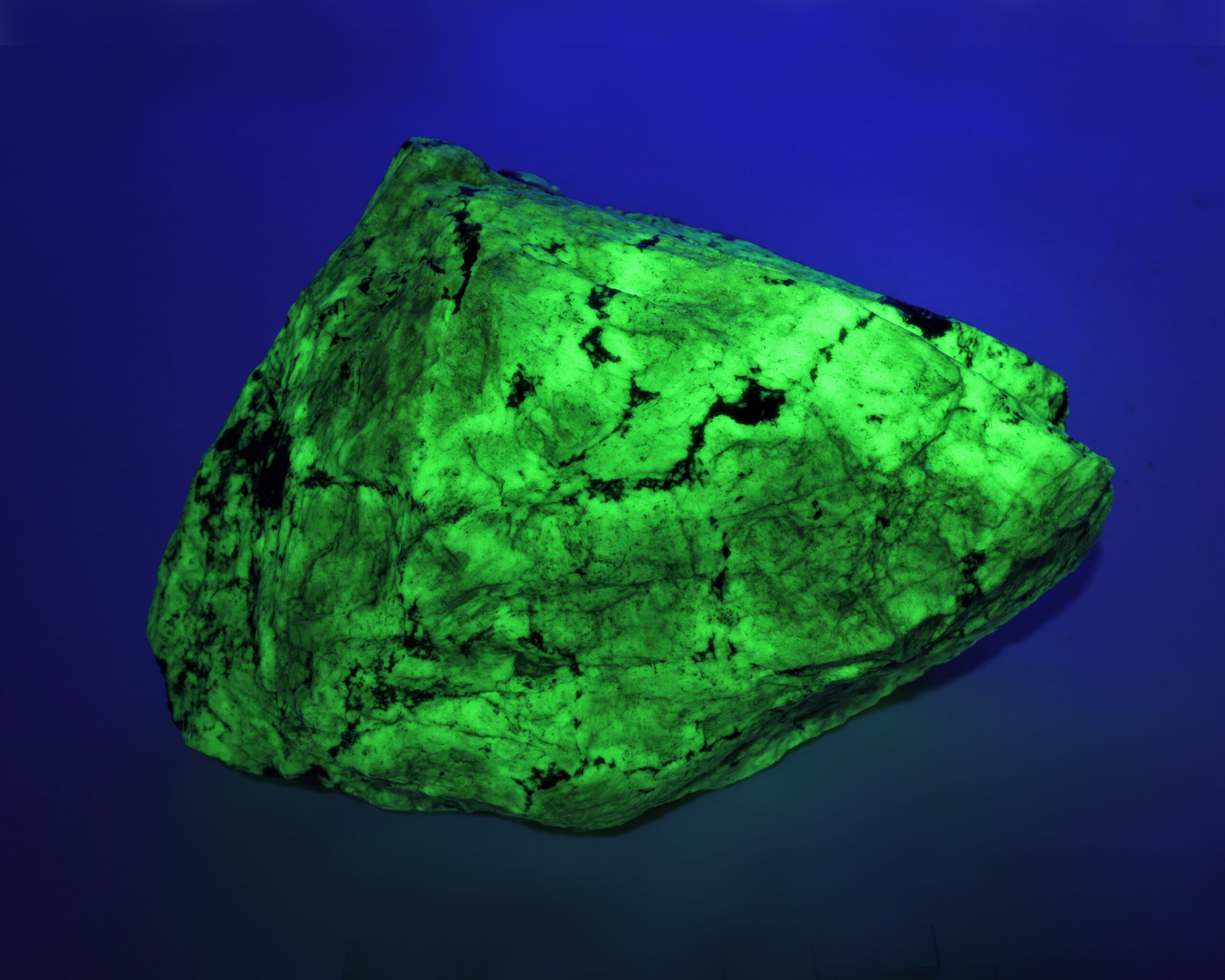
Within the natural science gallery of MoSH is a small corner room that connects with the geology gallery. This space is secluded and provides a darker room from the well-lit area outside, making it the perfect area to house our new gallery of fluorescent minerals. Fluorescence Rocks highlights seven different specimens from the Natural Science Collection that show the range of intensity and colors that can be encountered.
While Franklin, New Jersey, is named the fluorescent mineral capital of the world, fluorescent minerals can be found in the Mid-South region, particularly in Arkansas. Fluorescence is a type of photoluminescence, which is what happens when a molecule is excited by ultraviolet or visible light photons. It absorbs light at a given wavelength, and then emits the light at a different wavelength, resulting in the “neon glow”.
Click on the images below to learn more about these three specimens featured in the gallery, with in-depth information and photos. Be sure to stop by MoSH to see the rest of the specimens up close and enjoy their brightly colored glow!
Willemite with Franklinite
Franklin, New Jersey, is considered the fluorescent mineral capital of the world. Yet franklinite, named after the town, does not actually fluoresce under blacklight. As with this specimen, franklinite is often found with the mineral willemite.
Calcite Stalactite
This calcite stalactite commonly forms on the ceilings of limestone caves (not to be confused with stalagmites, the rounded cone-shaped formations found on the cave floor). Stalactites grow at a rate of 0.12 inches per year.
Corundum in Biotite-Microcline Gneiss
Rubies and sapphires are varieties of a mineral called corundum. The name corundum comes from the Tamil word “kurundam,” which translates to “ruby-sapphire.” (Rubies are red corundum, and all other colors are considered sapphires.)


